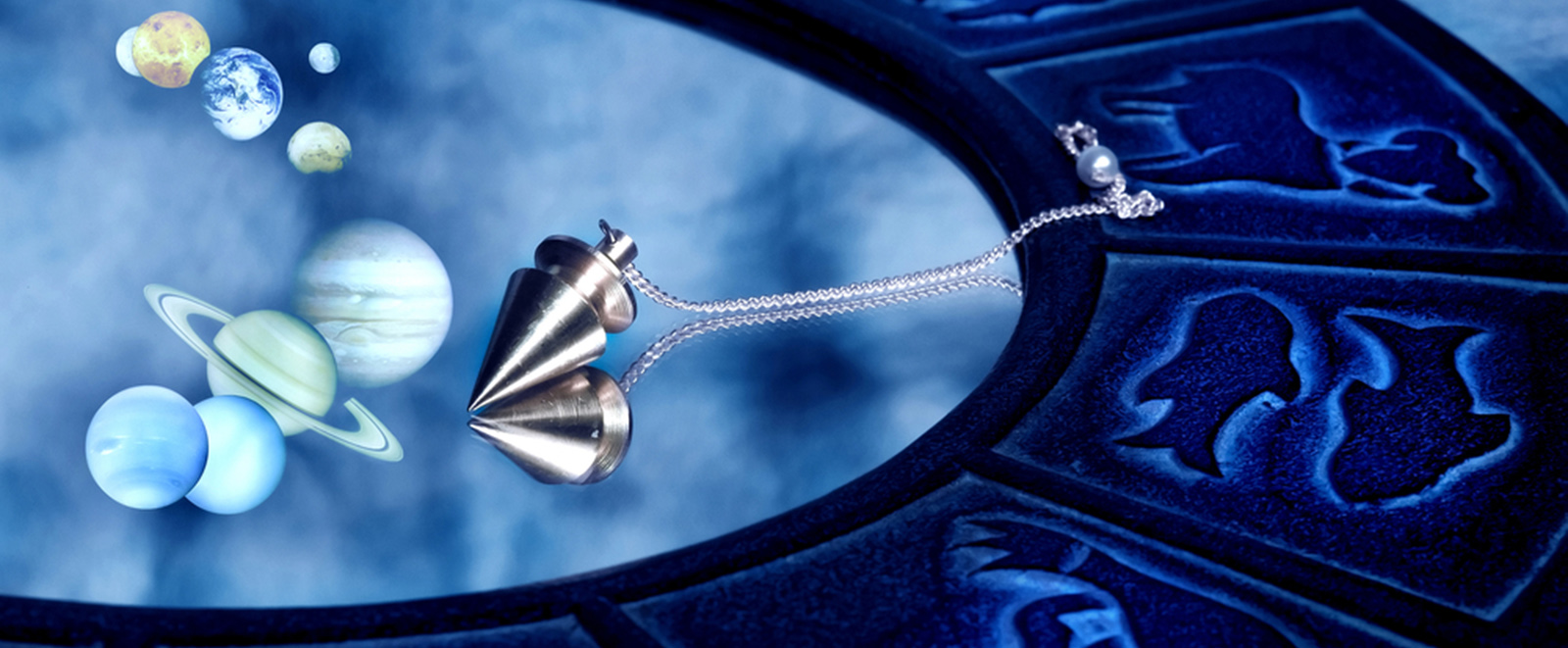Pendulums can be used in a variety of practical and creative ways such as asking questions that require a yes or no answer; checking out the energy field of a certain house, a room, an object, or a person; or finding out if certain foods have a beneficial, nutritional value. One’s imagination can supply all sorts of ways to utilize a pendulum as an adjunct to obtaining information, much like seeking a psychic, best friend, astrologist, or numerologist to get a “second opinion” on issues one may be dealing with or facing. Cayce’s reading encourages taking one’s time with using the pendulum along with experimenting with it. No doubt, these measures would enhance one’s ability to use it properly.
The term pendulum describes an item that hangs from a fixed point so that it can swing freely back and forth under the combined forces of gravity and momentum. What may come to mind immediately is the pendulum found in a grandfather’s clock, located below the clock’s face, which regulates the movement of time in a non-electric, non-digital mechanism.
Pendulums come in a variety of shapes and sizes with different types of strings and cords. The items at the end of the string may be made out of wood, metal, glass, or stone. They can be plain or fancy, whatever the owner desires. According to frequent users of pendulums, these tools should be wisely and carefully chosen. However, during educational workshops I’ve attended, some instructors have downplayed the serious aspect of choice, suggesting that almost anything resembling a pendulum can be used, if needed—even a teabag with its string still attached. It is the intention of the healer that is important, rather than the makeup of the tool.
There is only one reading given by Edgar Cayce that focuses on this topic. It was given on January 22, 1941, at the request of Mr. [2431] (no age given), who wished to enhance his activity in this area, especially in locating metals.
On November 26, 1940, several months before his reading, [2431] wrote to Hugh Lynn Cayce, Edgar’s son, about his interest in pursuing information on how pendulums work. Evidently he had spoken earlier with Hugh Lynn and was pleased that the A.R.E. might be interested in doing some research on pendulums. He also wrote that “my pendulums have at various times correctly guided me to the Bank of France and to gold deposits in other banks, that they have correctly weighed the amounts of gold in safe deposit boxes.” Then he mysteriously added, “...they have indicated the location of certain other substances which I do not care to mention in writing but whose whereabouts is a matter of great importance.” (2431-1, Background #5) Yet with certain maps, he stated, the treasures indicated through the pendulums failed to appear after excavations were done. He wished to ask Cayce about these failures and how their techniques might be improved.
In his rather short reading Cayce makes several pertinent points. “To say that there is naught in the use of the pendulum would be in error. To say that each entity could use same would also be in error.” (2431-1)
Continuing, the reading explains that metals and elements attract and repel, and that these characteristics “may be used as a means of locating [those things hidden, or misplaced].” Though admitting that the reading’s information is not specific, Cayce advises the user of the pendulum to take time to experiment when operating this tool. “Begin with whatever [one] desires to...” Cayce suggests, whatever one is seeking.
Nearly two weeks after the reading [2431] wrote again to Hugh Lynn expressing his gratitude for the information. "Although his findings give no new light on our pendulum work, they emphasize again the need of individual study of each material which we are seeking. Continued experimentation and checking seem to be the one path that leads to definite results.” (2431-1, Report)
He was disappointed, however, that the pendulum’s failures were not addressed, yet he was looking forward to the upcoming A.R.E. research that might uncover more practical, pertinent information. Despite Hugh Lynn’s interest in [2431]’s work and his encouragement to remain in touch, little further correspondence is included. In 1946 a letter from A.R.E. was returned, marked Address Unknown.
Although by Cayce’s own admission, the information from his reading is sketchy, the reading does provide a broad overview of the workings of the pendulum, yet leaves it up to the operator to use patience and experimentation to perfect its practicality. Discrimination is needed to determine the value and feasibility of its results, with the final choice being left to the free-will discretion of its owner.
Excerpt from the Winter 2015 Venture Inward Newsletter. A.R.E. Members can read the newsletter and search the online readings database at EdgarCayce.org/members.






